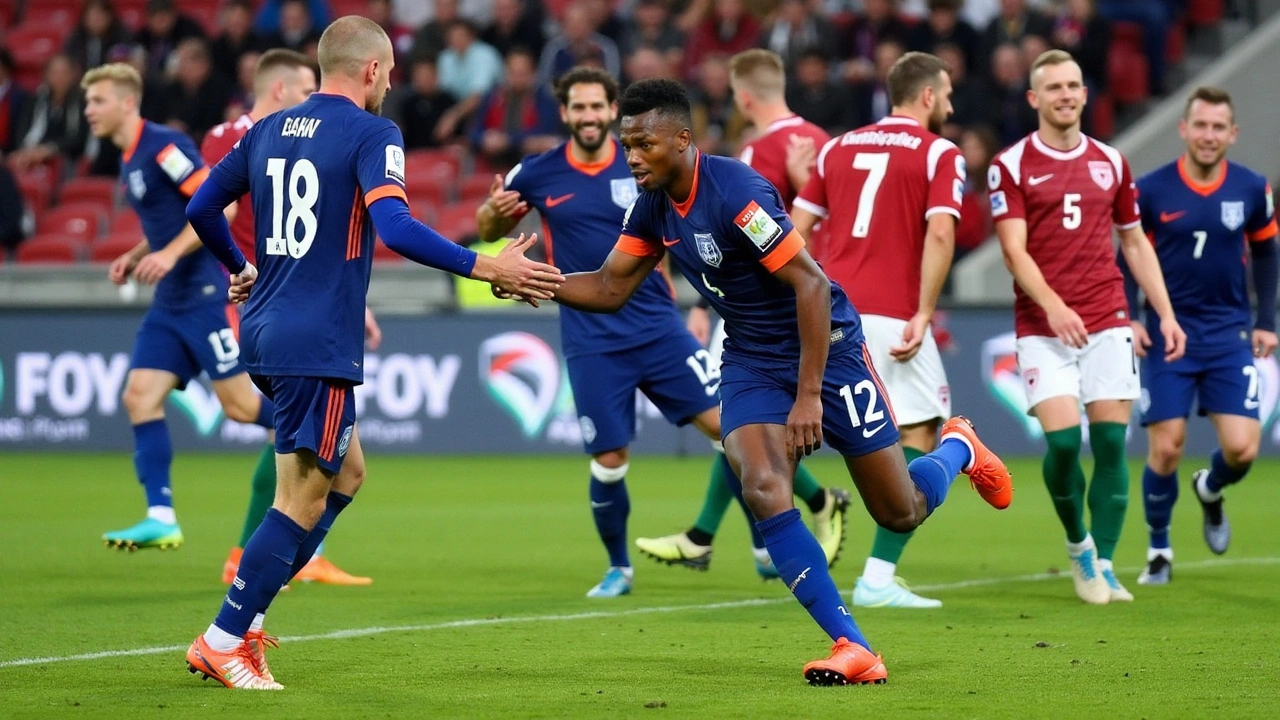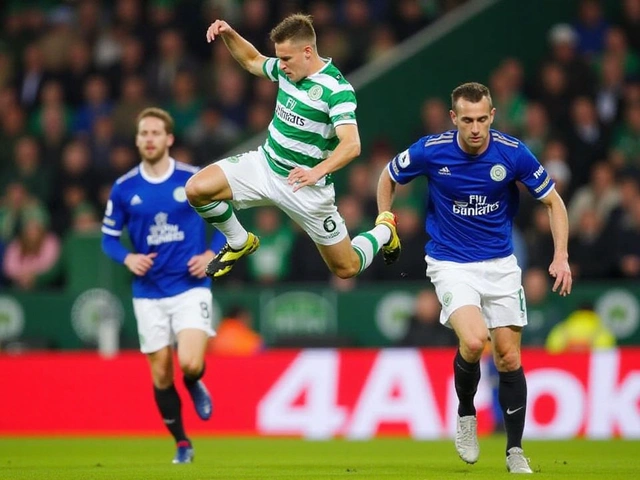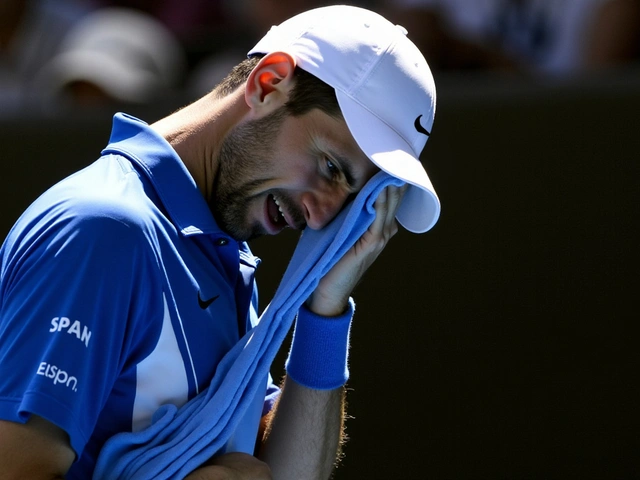The Setting
The UEFA Nations League clash between Hungary and the Netherlands promised to be an electrifying encounter, filled with tension, strategy, and footballing flair. Given the stakes at this level of international competition, both teams arrived with high expectations and a determination to make their mark on the tournament standings.
First Half Drama
As the match kicked off at a packed stadium, the Dutch team's intentions were clear—they sought to dominate possession and apply relentless pressure on their Hungarian hosts. Early exchanges showed the Netherlands' technical superiority, yet Hungary's robust defense thwarted initial attempts to break through. The Dutch midfield, orchestrated by Frenkie de Jong, attempted to orchestrate creative plays and incisive passes to unsettle the Hungarian backline.
On the other side, Hungary's tactical approach leaned heavily on swift counterattacks, with quick transitions from defense to offense aimed at catching the Dutch off guard. This strategy bore fruit when Hungary struck first, sending the home crowd into a frenzy. The goal was a product of a well-executed set-piece, with the Hungarian striker capitalizing on a defensive lapse to put the ball past the Dutch goalkeeper, Jasper Cillessen.
Virgil van Dijk's Red Card
The game took a sharp turn when a heated moment led to the Dutch captain, Virgil van Dijk, receiving a red card. The center-back's challenge was deemed reckless by the referee, leaving the Netherlands to grapple with playing a man down—a daunting task given the circumstances. This decision was met with fervent reactions from both sets of fans, adding to the match's growing tension.
Despite the numerical disadvantage, the Dutch team showed remarkable resolve. Coach Frank de Boer swiftly restructured the side, urging his players to maintain composure and stick to the tactical game plan. The focus shifted to a more compact formation, aimed at closing gaps and preventing Hungary from capitalizing further on the advantage.
Dumfries' Heroic Equalizer
As the match progressed into the second half, the Netherlands demonstrated exemplary resilience and determination. Denzel Dumfries emerged as the star of the show, launching from his defensive duties to equalize for the Dutch with a skillful header. Rising above the Hungarian defense, Dumfries placed the ball precisely into the far corner, silencing the home fans and revitalizing his team.
The equalizer galvanized the Netherlands, inspiring them to push forward in an effort to not just hold the draw but to sniff a possible win despite being a player down. Their relentless attacks tested the Hungarian defense's tenacity and showcased the tactical depth and adaptability of De Boer's side.
Final Stages and Implications
In the final moments of the match, both teams had opportunities to clinch the victory. The Netherlands' confidence - even when disadvantaged - was evident through their fluid play and intricate passing sequences. Hungary, meanwhile, remained dangerous on the counter, with the Dutch defense on high alert to avert any last-minute surprises.
As the final whistle blew, a 1-1 draw seemed a fair reflection of a fiercely contested match where both sides had their moments of brilliance and vulnerability. For the Netherlands, maintaining their unbeaten record in the group offered a psychological boost and demonstrated their capacity to perform under pressure. Meanwhile, Hungary left the pitch with valuable points, preserving their momentum in a challenging group stage.
The Broader Context
With this result, the Netherlands reinforced their position in the UEFA Nations League standings, showcasing their ability to adapt and persevere amidst challenges. The tenacious spirit displayed by players like Dumfries demonstrates the depth and versatility of the team, providing the Oranje with a solid foundation for future matches. The match, attended by thousands of passionate supporters, underscored the elegance and unpredictability that football brings, captivating fans and enthralling spectators worldwide.




Playing with ten men really shows how gritty the Dutch side can be.
Honestly, a 1‑1 draw isn’t even impressive-just a lucky escape for the Oranje 😂
From a systemic analysis standpoint, the emergent resilience can be attributed to a phase‑shift in defensive topology, leveraging positional interdependence to mitigate numerical deficit whilst sustaining ball progression.
The strategic recalibration post‑red card demonstrates the coaching staff’s adaptability within constrained parameters, reinforcing a disciplined structural compactness.
Sure, they tightened up, but let’s be real-without Van Dijk they were basically a house of cards, so the “compactness” was more about damage control than brilliance.
While the observation holds merit, it is essential to recognize the collective effort wherein midfield cohesion compensated for the defensive void.
The stadium roared as Hungary struck first, a moment that could have shattered Dutch hopes. Yet, the Dutch bench, steeled by decades of football heritage, refused to let the early setback define the narrative. Van Dijk's ejection was a thunderclap that rippled across the pitch, turning the match into a crucible of will. Coach De Boer, with the poise of a seasoned commander, reordered his troops, sacrificing flair for fortress. The back line shuffled, the midfield compressed, and a new rhythm emerged, slower but relentless. Dumfries, usually a sentinel, surged forward, his forward thrust a defiant banner against adversity. That header he launched was not merely a goal; it was a proclamation that the Netherlands would not bow. The equaliser ignited a surge of energy, each pass now carrying the weight of redemption. Hungary, sensing the shift, pressed harder, yet the Dutch responded with a fluidity that belied their numeric disadvantage. The tussle in midfield transformed into a chess match, each move calculated, each interception a statement. As the clock ticked, the crowd’s chants turned from protest to tentative hope for the Oranje. The final whistle arrived not as a verdict but as an acknowledgment of two teams locked in a fierce duel. For the Netherlands, the draw will be etched as a testament to character, a badge of perseverance under fire. For Hungary, the point will be a reminder that they can disrupt even the mightiest when seizing moments. In the grand tapestry of the Nations League, this match will be recalled as a saga of resilience, drama, and the unyielding spirit of football.
That’s a perfect illustration of how teamwork can turn a setback into momentum; kudos to the squad for staying locked in.
Honestly, the red card changed everything, and it was wild to watch the Dutch adapt on the fly.
Indeed, the adaptation reflects a deeper tactical flexibility that many teams lack, highlighting the value of versatile player roles.
The underlying philosophy emphasizes positional discipline, which becomes crucial when manpower is reduced.
Great job dutch team! u really showed heart out there even wif th red card lol
Absolutely, the resilience shown aligns with the core principles of disciplined play and mental fortitude.
Yo, that comeback vibe was lit! Shows what a squad can do when they fire up together.
So true!!! The energy was off the charts!!! Can't wait for the next match!!!
While we celebrate the spirit, it’s worth analysing why the Dutch struggled to maintain possession earlier; perhaps a focused midfield drill could iron that out.
meh... not really a thriller, just another draw, could've been better??
It feels like the game just drifted, nothing exciting.
Actually the tension was palpable and the stakes high
Look, if you break down the possession stats you’ll see Hungary actually held the ball longer, which explains the early goal.